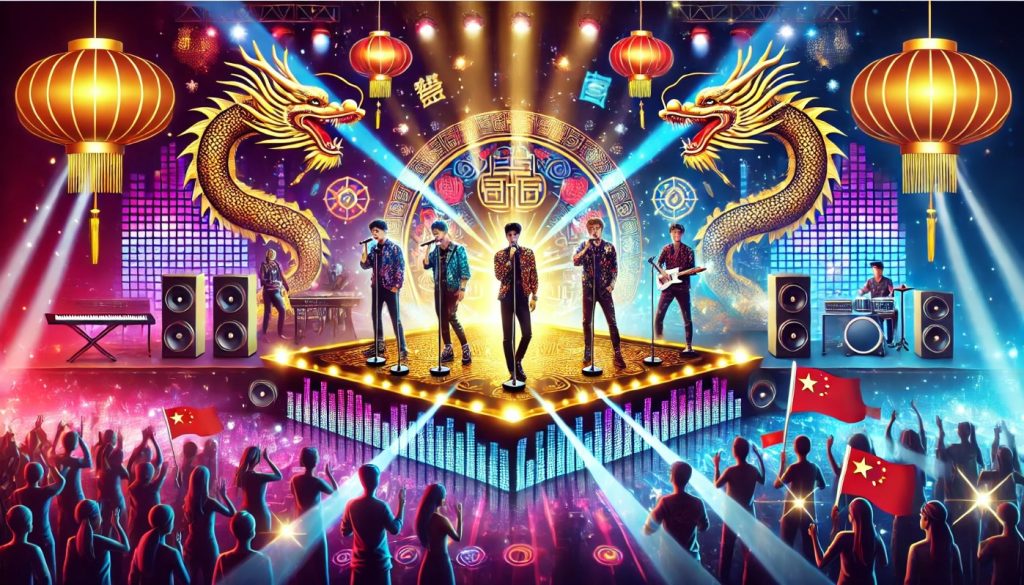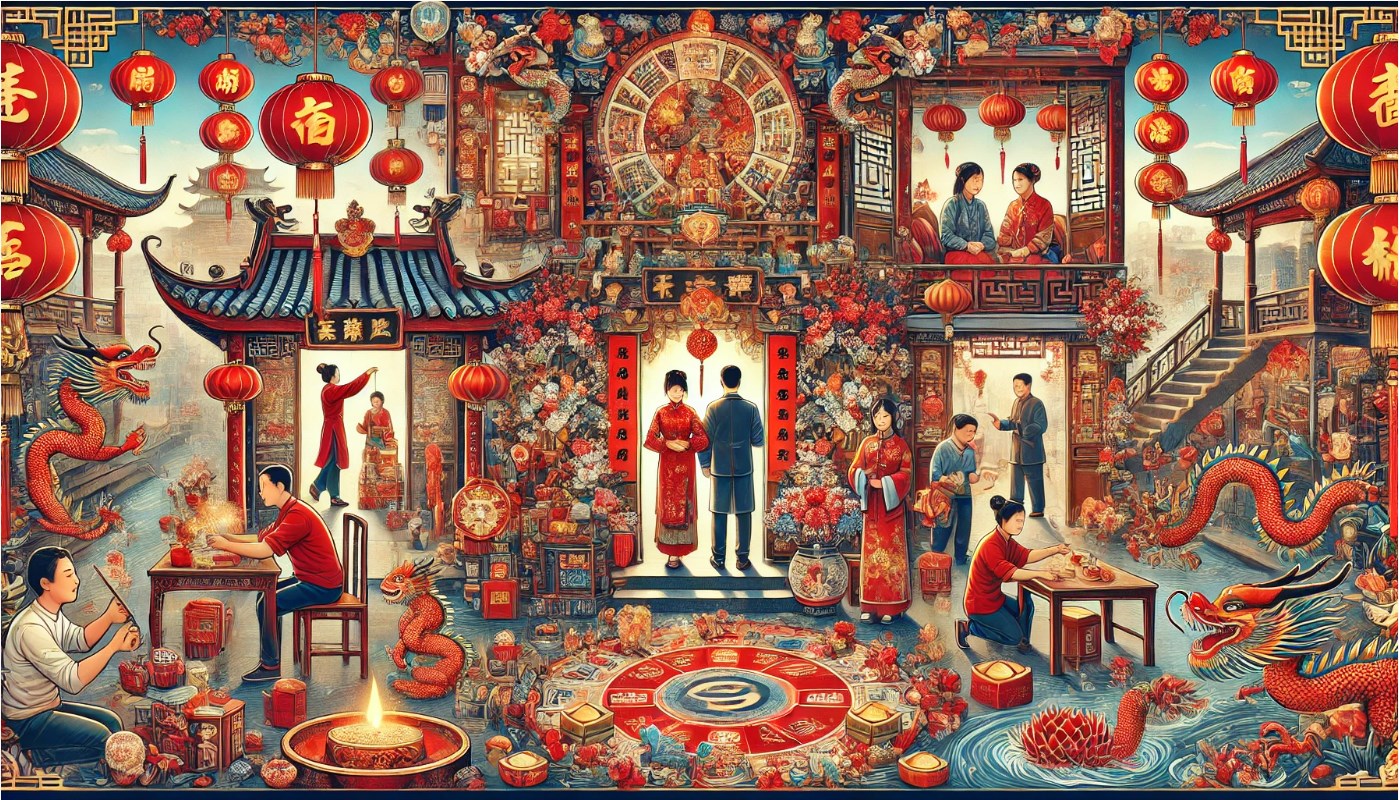Chinese pop music, often referred to as C-pop, is a vibrant and rapidly evolving genre that has gained considerable prominence both within China and internationally. With its roots deep in China’s rich musical traditions and its branches stretching toward global pop culture, C-pop represents a unique blend of Eastern and Western influences. The genre encompasses various subgenres, including Mandopop (Mandarin pop), Cantopop (Cantonese pop), and the more recent forays into experimental, indie, and digital music. Over the years, C-pop has developed a distinct identity, one that is shaped by China’s cultural and social landscape, technological advancements, and the growing influence of the internet and social media.
The Origins of C-pop
Early Influences and Traditional Roots
The roots of C-pop can be traced back to China’s long and storied musical traditions. Traditional Chinese music, which emphasizes melody, harmony, and instruments such as the guqin, erhu, and pipa, laid the foundation for many modern Chinese music forms. However, the development of contemporary Chinese popular music began in the early 20th century with the introduction of Western musical elements.
- The Influence of Western Music: In the early 20th century, Western classical and popular music began to influence Chinese musicians. During the Republican era (1912-1949), Chinese musicians started integrating Western instruments like the piano, violin, and guitar into their compositions. This period also saw the rise of shidaiqu (时代曲), a genre that blended Western jazz and Chinese lyrics, often incorporating themes of romance and social change.
- The Post-Revolutionary Era: After the founding of the People’s Republic of China in 1949, the government prioritized socialist realism, and music became a means of promoting revolutionary ideals. The genre known as “revolutionary songs” dominated for decades, but after the Cultural Revolution (1966-1976), China began to open up again to foreign cultural influences.
The Birth of Modern C-pop in the 1980s
The 1980s marked a significant shift in Chinese popular music, as China began to embrace Western pop culture. This period is considered the birth of modern C-pop, driven by both political and social changes in the country.
- Economic Reforms and Open Door Policy: Following China’s economic reforms under Deng Xiaoping, the opening up of the country allowed for the import of Western music and media. Western pop music, particularly rock, disco, and synth-pop, began to influence young Chinese musicians.
- Mandopop and Cantopop: In the 1980s, two distinct forms of pop music emerged: Mandopop (Mandarin pop) and Cantopop (Cantonese pop). Mandopop, sung primarily in Mandarin, became dominant in mainland China, while Cantopop, sung in Cantonese, gained popularity in Hong Kong and parts of Southern China. These two styles marked the beginning of C-pop’s commercialization.
Rise of Idol Culture in the 1990s and 2000s
The 1990s and early 2000s saw a surge in the popularity of C-pop, fueled by the rise of idol culture and a growing youth market. During this time, C-pop stars began to dominate the charts, and music television shows and concerts became important platforms for promoting new talent.
- TV Shows and Talent Competitions: Programs like “Super Girl” and “The Voice of China” became breeding grounds for new stars, especially in the 2000s. These talent shows, often featuring a mix of pop, rock, and ballads, created huge fan followings and gave rise to China’s modern idol culture.
- Singers and Groups: Icons such as Jacky Cheung, Faye Wong, and Jay Chou emerged as key figures in the C-pop industry, helping to solidify its mainstream presence. Many of these artists combined traditional Chinese elements with Western influences, creating a sound that resonated with young listeners both domestically and abroad.
Key Figures in C-pop
Legendary Artists and Pioneers
C-pop owes much of its growth and popularity to the foundational figures who shaped its development in the 20th century. These artists helped elevate Chinese pop music from its early, experimental stages to a global phenomenon.
- Teresa Teng: Widely regarded as one of the most influential figures in C-pop history, Teresa Teng became a symbol of love and longing across the Chinese-speaking world. Her soulful voice and ability to cross language barriers made her an icon in the 1970s and 1980s. Her songs, such as “The Moon Represents My Heart”, continue to be celebrated for their timeless appeal.
- Jacky Cheung: Often referred to as the “God of Songs,” Jacky Cheung is a legendary Cantopop artist from Hong Kong. His career spans several decades, and he remains one of the most beloved voices in C-pop, known for his emotional ballads and wide vocal range. He has been instrumental in popularizing Cantopop internationally.
- Faye Wong: One of the most prominent figures in the 1990s and 2000s, Faye Wong blended alternative rock with pop, becoming one of the most influential and iconic female voices in the Chinese-speaking world. Her unique style, coupled with a somewhat ethereal public persona, has earned her a loyal following across China, Hong Kong, and Taiwan.
The Rise of Young Idols and New Generation Artists
In the 2000s and 2010s, a new generation of young idols began to rise in the C-pop industry, thanks to the advent of reality TV shows and social media platforms. These stars, often seen as youth culture icons, have reshaped the image of C-pop and brought it into the 21st century.
- Jay Chou: Known as the “King of Mandopop,” Jay Chou revolutionized the genre in the early 2000s by incorporating elements of hip-hop, R&B, and classical music into his work. His unique fusion of Western and Chinese styles, along with his poetic lyrics, made him a superstar. His influence on the younger generation is immeasurable, and his music continues to define the sound of contemporary Mandopop.
- EXO and K-pop Influence: The rise of K-pop (Korean pop music) in the 2010s also had a significant impact on C-pop. Groups like EXO, which includes Chinese members, brought a more globalized pop style to the Chinese-speaking market. This influence paved the way for China to embrace a more internationalized and polished sound in C-pop, which is evident in the rise of Chinese idol groups like TFBOYS and UNIQ.
- Luhan and Kris Wu: Former members of EXO, Luhan and Kris Wu, became solo stars in their own right after leaving the group. Both artists expanded their influence internationally, with Kris Wu making inroads into Hollywood and Luhan becoming a major figure in both music and fashion.
C-pop Genres and Subcultures
Mandopop and Cantopop
Mandopop and Cantopop are the two most dominant genres of C-pop. Each represents the musical tastes and cultural nuances of different regions and linguistic communities within China and the greater Chinese-speaking world.
- Mandopop: Sung primarily in Mandarin Chinese, Mandopop is the most widely recognized genre of C-pop and has a significant presence not only in mainland China but also in Taiwan and Singapore. Over the years, Mandopop has evolved to encompass a wide range of musical styles, from ballads to hip-hop to electronic dance music (EDM). Artists like Jay Chou, JJ Lin, and Rainie Yang have shaped the genre with their unique sounds and contributions.
- Cantopop: Although Cantopop, sung in Cantonese, has a more regional focus in Hong Kong and southern China, it has had an enormous cultural impact, especially in the 1980s and 1990s. Iconic figures such as Leslie Cheung, Anita Mui, and Alan Tam were instrumental in establishing Cantopop as a major force in the global music scene.
Indie and Experimental C-pop
In recent years, the rise of digital platforms and independent music scenes has led to the emergence of a growing indie C-pop movement. This subgenre encompasses a wide array of styles, including synthpop, folk, alternative rock, and electronic music.
- Indie Artists: Artists like Xiao Hong, Hao Yun, and Chen Li have brought alternative sounds to the mainstream, blending elements of traditional Chinese music with contemporary global genres. These artists often have a more niche following, but they are celebrated for their originality and ability to break away from the mainstream.
- Music Festivals and Online Platforms: The rise of music festivals like Midi Music Festival and the growing prominence of online streaming platforms such as NetEase Cloud Music and Bilibili has given indie musicians greater exposure, creating a new era of C-pop where diverse musical voices can be heard.
Digital C-pop and Virtual Idols
Another exciting development in C-pop is the emergence of virtual idols and the integration of digital technology into the music production process.
- Virtual Idols: Similar to Japan’s Hatsune Miku, virtual idols in China have become increasingly popular, especially among younger audiences. These computer-generated personalities, like A-SOUL, have amassed millions of fans and are often the product of collaboration between music companies, technology firms, and video game developers. These virtual idols perform live concerts in digital spaces and release music, attracting a new wave of fans who are particularly engaged with the digital aspects of C-pop culture.
- Digital Platforms and Social Media: The internet has transformed C-pop into a global phenomenon. Platforms like Weibo, TikTok, and Douyin (the Chinese version of TikTok) allow C-pop stars to interact with their fans directly. Online streaming services, such as QQ Music and Kugou, have helped artists distribute their music rapidly, giving them access to both Chinese and international audiences.
The Global Reach of C-pop
C-pop’s Influence on Global Music Culture
C-pop has increasingly found a global audience, with Chinese-speaking communities in Southeast Asia, North America, and Europe forming the core of its international following. As China’s cultural and economic influence expands, C-pop is beginning to break into mainstream music markets, and Chinese artists are gaining international recognition.
- Chinese Diaspora and Global Audiences: Chinese pop music has long had a dedicated fanbase in regions with significant Chinese-speaking populations, including Taiwan, Hong Kong, Singapore, and various countries in Southeast Asia. In recent years, C-pop has gained traction in North America and Europe, largely due to the rise of social media and international streaming platforms.
- Collaboration with International Artists: As C-pop continues to internationalize, collaborations between Chinese artists and international stars have become more common. For example, Kris Wu’s collaborations with Western artists like Travis Scott have introduced Chinese pop to a broader audience. Similarly, artists like Jackson Wang (a former member of K-pop group GOT7) have successfully bridged the gap between C-pop and K-pop, gaining fans across the world.
Challenges and Opportunities for C-pop
Despite its growing popularity, C-pop still faces significant challenges in its quest for global recognition. Issues related to censorship, language barriers, and cultural differences pose challenges for Chinese artists seeking to break into Western markets. However, the rise of digital platforms and streaming services offers new opportunities for the genre to transcend geographic boundaries and connect with a global audience.
- Language Barriers: While some C-pop artists have begun to release songs in English or mix Mandarin and English, language remains a significant barrier to C-pop’s widespread international appeal.
- Censorship and Political Sensitivities: The Chinese government’s strict censorship policies continue to influence the content and presentation of C-pop music. These restrictions can sometimes limit the creative freedom of artists, especially when it comes to lyrics, music videos, and live performances.
Despite these challenges, C-pop’s trajectory suggests that it will continue to grow and evolve, adapting to the demands of both Chinese and global audiences. The future of C-pop will likely see even more cross-cultural collaborations and innovations in music, technology, and performance, solidifying its place in the global pop music landscape.







